#VMF-212
Explore tagged Tumblr posts
Text
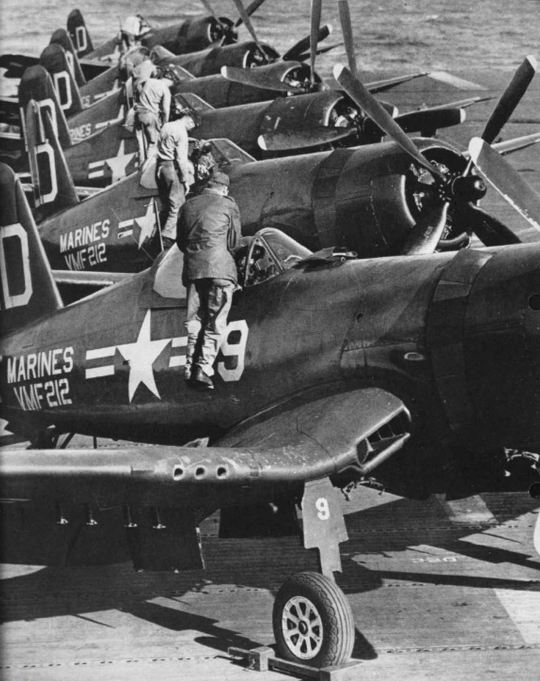
Vought F4U-4B Corsairs (VMF-212) aboard USS Rendova, 1951.
186 notes
·
View notes
Text
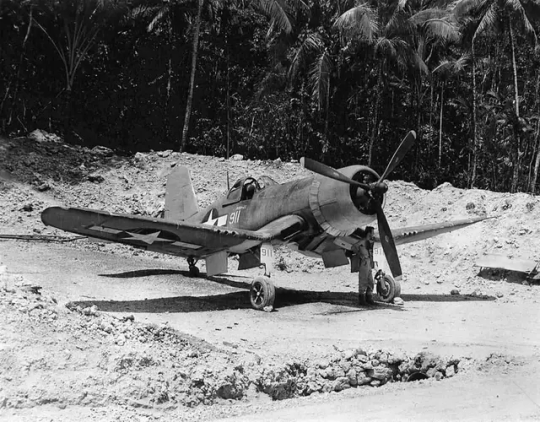
F4U Corsair from VMF-212 on Vella Lavella, January 1944. Note the special wheel chocks.
71 notes
·
View notes
Text
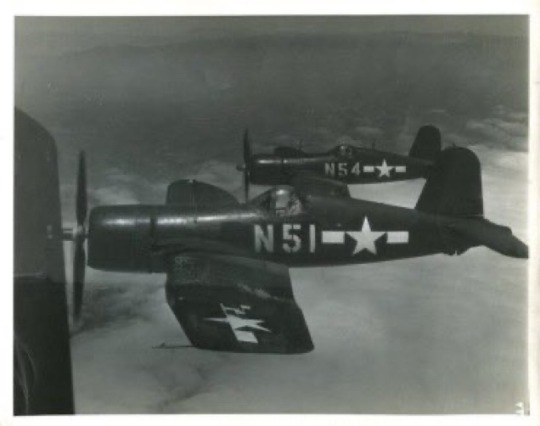
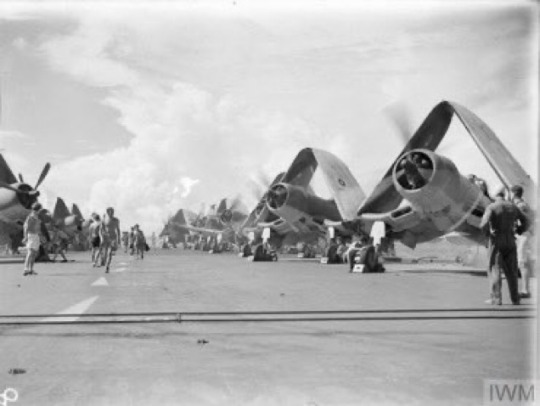
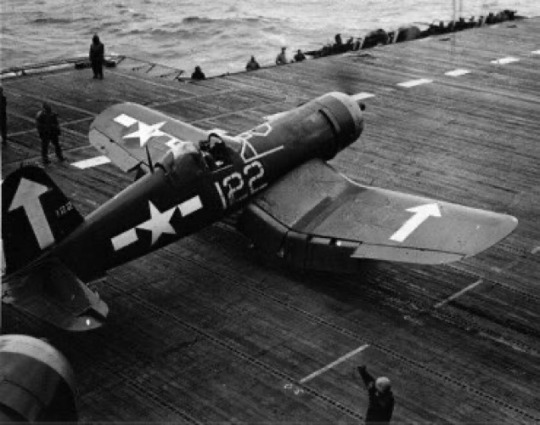
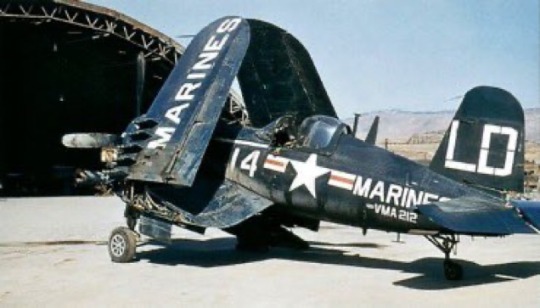
29th May, 1940. First flight of the Vought F4U Corsair, which would serve extensively in the Second World War and Korea, with almost 13,000 built. Fast, rugged and heavily armed, the aircraft suffered from some initial problems but excelled as a fighter and fighter-bomber. With its distinctive inverted gull wing, designed to provide clearance for the propeller, the Corsair earned its nickname of ‘Bent-Wing Bird’.
Due to a high accident rate on its introduction to service, the U.S. Navy initially refused to use Corsairs on carrier operations. Instead, they were flown by Marine units in the Solomons, who quickly exploited their powerful machines to establish superiority over Japanese aircraft. From September 1943, VMF-14 (the ‘Black Sheep’) under ‘Pappy’ Boyington shot down nearly 100 aircraft and damaged the same number in two 6-week tours. Boyington himself would claim 28 kills before being shot down in January 1944.
It was the British Fleet Air Arm that first flew Corsairs operationally from carriers, having made a number of modifications to improve their safety on landing. Initially used on strikes against the Tirpitz from April 1944 before relocating to the Pacific, 16 squadrons of FAA Corsairs were in service by the end of the war. On 9th August 1945, Canadian pilot Robert Gray earned a posthumous VC after bombing and sinking a Japanese warship despite his Corsair being on fire after taking hits from flak.
Cleared for carrier service on U.S. Navy carriers in mid-1944, Corsairs soon proved their worth, increasingly in the ground attack role but also against kamikaze attacks. By the end of the war, Navy and Marine pilots were credited with destroying over 2,100 Japanese aircraft for the loss of fewer than 200 Corsairs in combat - though substantially more were destroyed in accidents.
Corsairs returned to combat duty with both the U.S. Marines and Navy during the Korean War. One MiG 15 was shot down in September 1952, but the aircraft were used almost exclusively for ground attack. Marine aircraft were redesignated AU-1, armoured and armed with 4x20mm cannon plus rockets or up to 4,000lb of bombs.
Corsairs were later operated by the French Aéronavale over Indochina, Suez, Algeria and Tunisia into the 1960s. In July 1969, a Honduran aircraft flown by Captain Fernando Soto took part in what may have been the final combats in history between piston-engined fighters, shooting down two Salvadoran Corsairs and a Mustang. Both El Salvador and Honduras retained their Corsairs into the 1970s.
Pictured:
1) Future astronaut John Glenn on a training flight in his VMF-155 Corsair over California in 1943. He would fly 57 combat missions in the Pacific.
📷 airandspace.si.edu
2) Fleet Air Arm Corsairs lined up on the deck of HMS Illustrious, prior to a raid on Surabaya, 27th May 1944.
📷©️IWM A 24274
3) Corsair on the deck of USS Bunker Hill off Okinawa, 9th May 1945.
📷 ww2db.com
4) Well used AU-1 Corsair of VMA 212 in Korea, 1952.
16 notes
·
View notes
Photo

The U.S. Navy escort carrier USS Badoeng Strait (CVE-116) underway off Korea, operating Vought F4U Corsairs of Marine Fighter Squadron 212 (VMF-212). 13th January 1952.
77 notes
·
View notes
Text
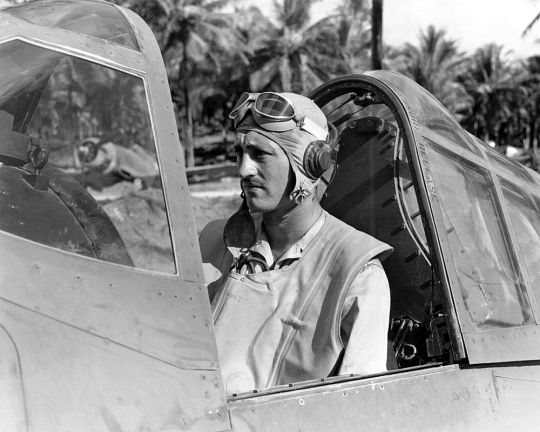
USMC 1st Lt Francis Pierce in his Vought F4U-1 Corsair (VMF-212), Guadalcanal, 1943.
75 notes
·
View notes
Text

Vought F4U-4B Corsair (VMF-212) aboard USS Badoeng Strait off Korea, 1952.
46 notes
·
View notes
Text
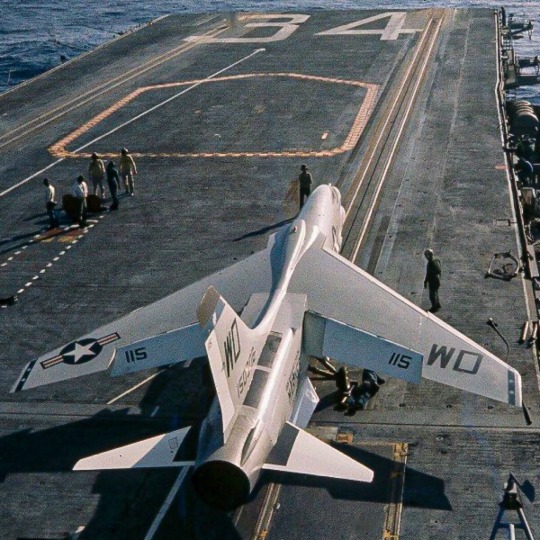
A Vought F-8E Crusader from Marine fighter squadron VMF(AW)-212 Lancers on the catapult of the USS Oriskany (CVA-34) in 1965. (jim Labianco)
@kadonkey via X
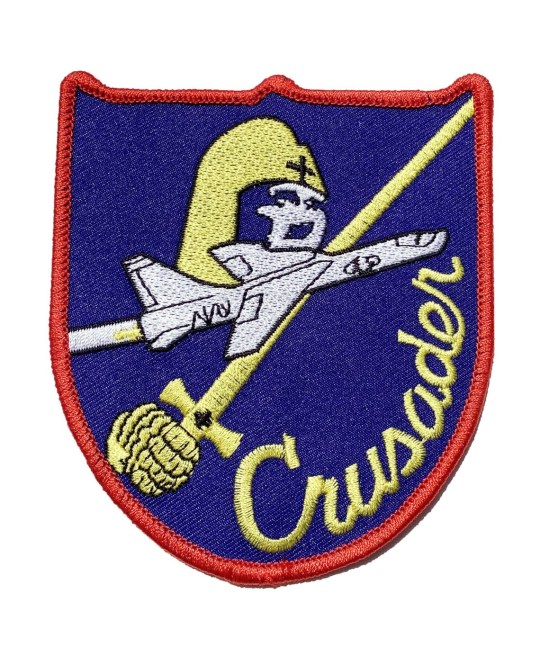
12 notes
·
View notes
Text

Airworthy Corsair on loan to museum
28th August 2023
News
Vought F4U-4 Corsair BuNo 97388 will be operated from a museum in Minnesota
The airworthy machine, resplendent in the VF-42 colours it wore in service, has been loaned to the Fagen Fighters WWII Museum in Granite Falls, Minnesota, by owners Cindy and Whitney Beck. The move has come about after the closure of its previous home, Eden Prairie’s Wings of the North Air Museum.
This Corsair did not serve in World War Two, but entered US Navy hands in 1946, and flew with a variety of units, including Marine Fighter Squadron 225 (VMF-225) at MCAS Cherry Point, North Carolina, and then with Japan-based VMF-212 from 1949. It may have participated in actions during the Korean War, but was returned to the US in 1950 for overhaul. More assignments followed, culminating in a stint with VF-42.
This well-travelled machine was later assigned to the Honduran Air Force, but was eventually acquired by North Dakota warbird expert Gerry Beck who spent 16 years restoring it to flight worthy condition. From 1998, when it made its first post-restoration flight, it became well known on the Dakota airshow circuit, and following Gerry’s tragic death in 2007 it passed into the hands of his family.
Evan Fagen (in cockpit) and John Sinclair with Corsair 97388
2 notes
·
View notes
Text

F4U-4 Corsair To Be Loaned To Fagen Fighters WWII Museum
August 21, 2023 Angela Decker Aviation Museum News 0
John Sinclair giving instruction to Evan Fagen in the Corsair. Photo via Fagen Fighters Museum
Aircorps Art Dec 2019
by Adam Estes
The Fagen Fighters WWII Museum in Granite Falls, Minnesota, has just announced that will display F4U-4 Corsair BuNo 97388 through a loan agreement with owners

Photo via Fagen Fighters Museum
Bureau Number 97388 was taken on strength with the US Navy on April 26, 1946 and delivered four days later on April 30. The first two years of its service life would see it being assigned to several Naval Air Stations on the West Coast, such as Tillamook from June 1946 to October 1947, Santa Ana until March 1948, and San Diego until October of that year, when it was transferred to Marine Fighter Squadron 225 (VMF-225) at MCAS Cherry Point, North Carolina. June of 1949 would see 97388 sent to join VMF-212, which was in Japan at that time. Though the aircraft’s recorded history with VMF-212 contains no specific dates or locations for which exact bases in Japan it served at, the squadron would become involved in air operations at the outset of the Korean War. In the first two months of the conflict, it is highly probable that 97388 took part in combat missions launched from Japan to stem the tide of the initial North Korean advance into South Korea. Its time in combat would be cut short, however, as the aircraft would be sent back to the US in August of 1950 for overhaul and maintenance at NAS Quonset Point, Rhode Island before it would be reassigned to Fleet Air Service Squadron 3 at NAS Norfolk, Virginia. The following month, on September 14, BuNo 97388 would be assigned to VF-42. This posting would see the Corsair flying from NAS Oceana and NAS Jacksonville before being taken on a tour of the Mediterranean aboard the light carrier USS Saipan (CVL-48) from May to June of 1951, before being sent to NAS Cecil Field, Florida two months later. After a final deployment with VF-42 at NAS Oceana from November 1951 to May 1951, 97388 would undergo maintenance and overhaul at NAS Quonset Point until January 1953, when the aircraft was used primarily for reserve training at NAS Olathe, Kansas and NAS Grosse Ile, Michigan. In June of 1956, the aircraft was sent into storage at NAS Litchfield Park, Arizona before being decommissioned the following month.
After sitting outdoors at Litchfield Park, the aircraft was purchased by aircraft trader and pilot Bob Bean on November 25, 1957, who registered the Corsair as N5211V. One year later, Bean would later arrange for a trade between himself and the Honduran Air Force (Fuerza Aérea Hondureña, FAH) where 10 Corsairs (including 97388) would be shipped to Honduras in exchange for four P-38 Lightnings and four P-63 Kingcobras. In the FAH, 97388 would be identified as serial number 610, and while other Honduran Corsairs would later see combat in the Football War against El Salvador in 1969, FAH 610 had been struck off charge at the FAH Air Base at Toncontin International Airport in the capital city of Tegucigalpa, serving a source of spare parts to keep the other Corsairs flying.

Photo via Fagen Fighters Museum
FAH 610 would remain at Toncontin until 1978, when it was one of seven Honduran Corsairs returned to the United States by George Heaven & Jim Nettle of Hollywood Wings in Long Beach, California. By this point, the airframe was more a collection of parts then an airplane, and would require extensive restoration work to bring back into the skies. It would be stored in Long Beach until 1981, when it was purchased by Earl Ware of Jacksonville, who then kept the fuselage remains in his backyard, along with three other incomplete Honduran Corsairs (These being FAH 611 (USN BuNu 97382), FAH 617 (BuNo 97059), and FAH 692) until it was sold in 1982 to famed warbird restorer and pilot Gerald “Gerry” Beck of North Dakota, who would go on to spend the next 16 years meticulously returning 97388 back to airworthy condition at his shopTri-State Aviation in Wahpeton. When completed, 97388 emerged from the workshop in the markings it wore when assigned to VF-42.
After making its first post-restoration flights in 1998, Beck and 97388 would appear at EAA Airventure later that year. Over the years, 97388 would make appearances at numerous airshows and was a regular at the Fargo Air Museum in Fargo, North Dakota during the offseason, though it would later become a yearlong resident of Fargo as Beck focused on his “homebuilt” P-51A “Precious Metal II”. With the tragic death of Beck in 2007, his wife Cindy retained the Corsair and would ferry it back from Fargo to Wahpeton for refurbishment. Once completed by Tri-State in December of 2016, 97388 would be displayed at the Wings of the North Air Museum in Eden Prairie, Minnesota and was a feature of museum events such as AirExpo. With the unfortunate news of the museum’s public closure and ongoing search for a new home, Cindy and Whitney Beck have now decided to loan the Corsair to the Fagen Fighters WWII Museum. Given the wide variety of aircraft at Fagen’s expanding museum, it is indeed fortunate that 97388 has a secure home to continue flying the Midwestern skies. For more information about the Fagen Fighters WWII Museum, visit www.fagenfighterswwiimuseum.org.
6 notes
·
View notes